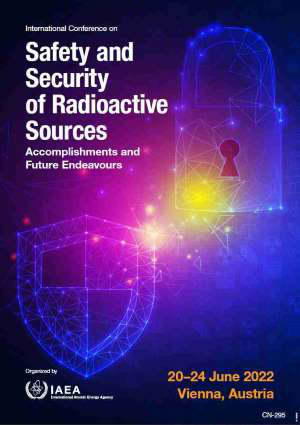Speaker
Description
Sealed radioactive sources (SRS) are widely used in Cuba in industry, medicine and research. The national regulations establish that when the SRS are declared disused they have to be returned to the provider. The reuse of the sources by other Licensee is also authorized. When these options are not available, the disused sealed radioactive sources (DSRS) are transferred to the Centre for Radiation Protection and Hygiene (CPHR), the organization responsible for the management of radioactive waste in Cuba. DSRS are collected by the CPHR and transported to the Waste Management Facilities, for characterization, conditioning and safe storage. The first national collections of DSRS were carried out at the beginning of nineties, when the centralized waste storage facility was put in operation. At the beginning, the DSRS were stored in the facility as received. Around the year 2000 the characterization and conditioning of the DSRS started, by placing the devices with the DSRS inside pre-cemented 200-litre drums. They were not immobilized to allow retrievability for future conditioning and disposal.
Later on, and following the IAEA recommendations, the DSRS started to be conditioned by encapsulation. The conditioning process consists of removing the sources from the devices, characterizing and placing in stainless steel capsules. The conditioning plan is previously prepared, containing the devices to be dismantled and the sources to be placed in each capsule, depending on the radionuclide, activity and dimensions of the sources, as well as the limits established in the safety assessment. The capsules are sealed by welding the lid. After checking that the capsules are leak-tight, they are placed in suitable containers. The conditioning process results in waste packages, suitable for safe and secure storage and does not preclude subsequent preparation for disposal. These operations are authorized by the National Regulatory Body in the current License for the radioactive waste management practice.
Radium-226 sources were the first to be conditioned, in 2007, following this methodology. The conditioning of other DSRS of categories 3-5 continued in 2015. Forty four (44) neutron sources and seventy four (74) Cs-137 radioactive sources were removed (from nuclear gauges, calibration and teaching devices) and conditioned between 2015 and 2016. One hundred eighty eight (188) radioactive lightning conductors, 183 of them containing Am-241 sources and 5 containing C-14 sources, were dismantled between 2019 and 2020. The recovered DSRS were encapsulated.
Cuban experts have provided support to several other Member States around the world in the safe management of their disused sealed radioactive sources. Expert Missions through different IAEA Technical Cooperation Projects have been carried out to assist in their capacity building, the development of operational procedures, safety assessment and licensing of the field operations, including removal of DSRS from devices, characterization, encapsulation and safe storage.
The paper illustrates the progress of Cuba in the safe management of DSRS in the last 20 years.
| Country OR Intl. Organization | Cuba |
|---|

